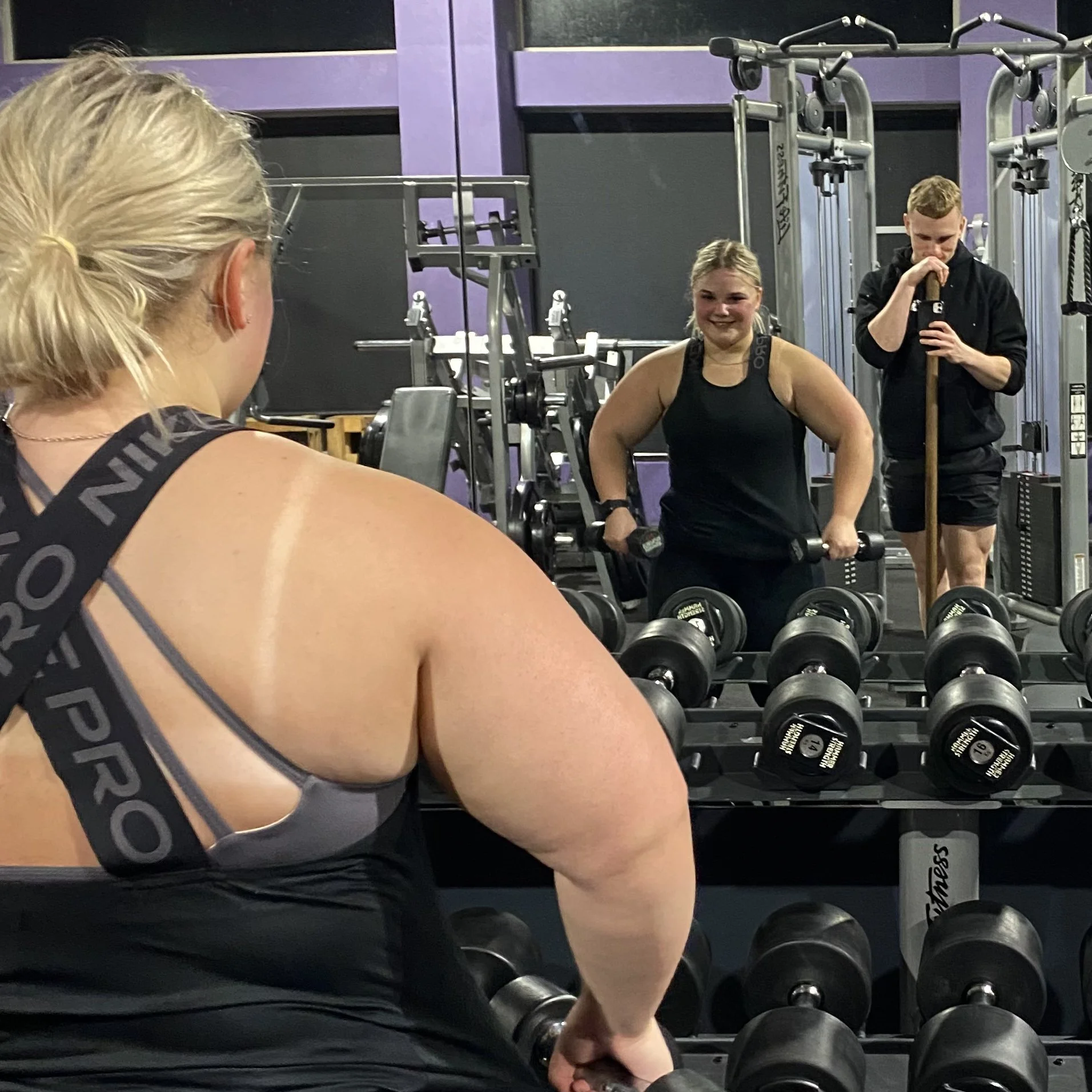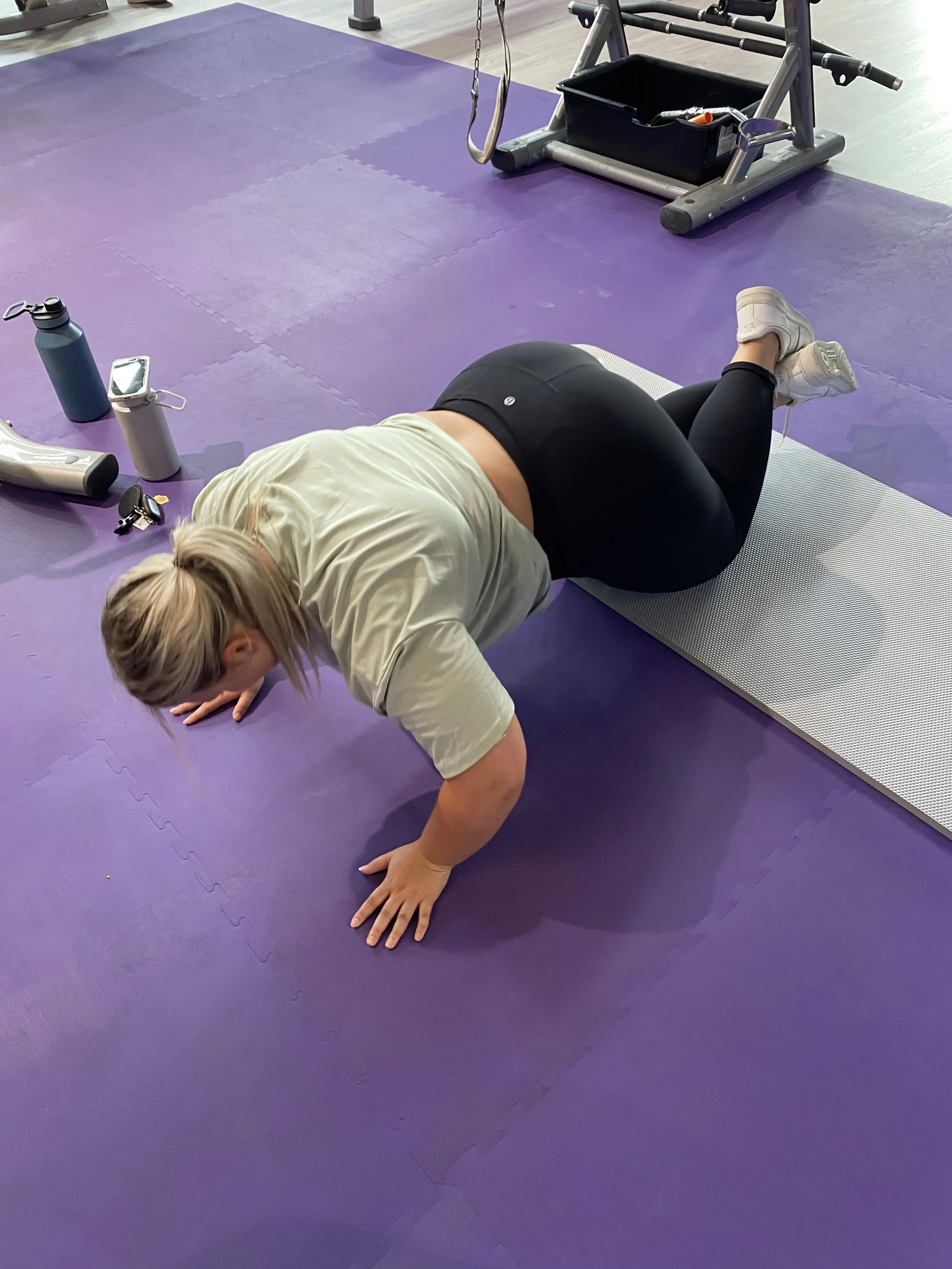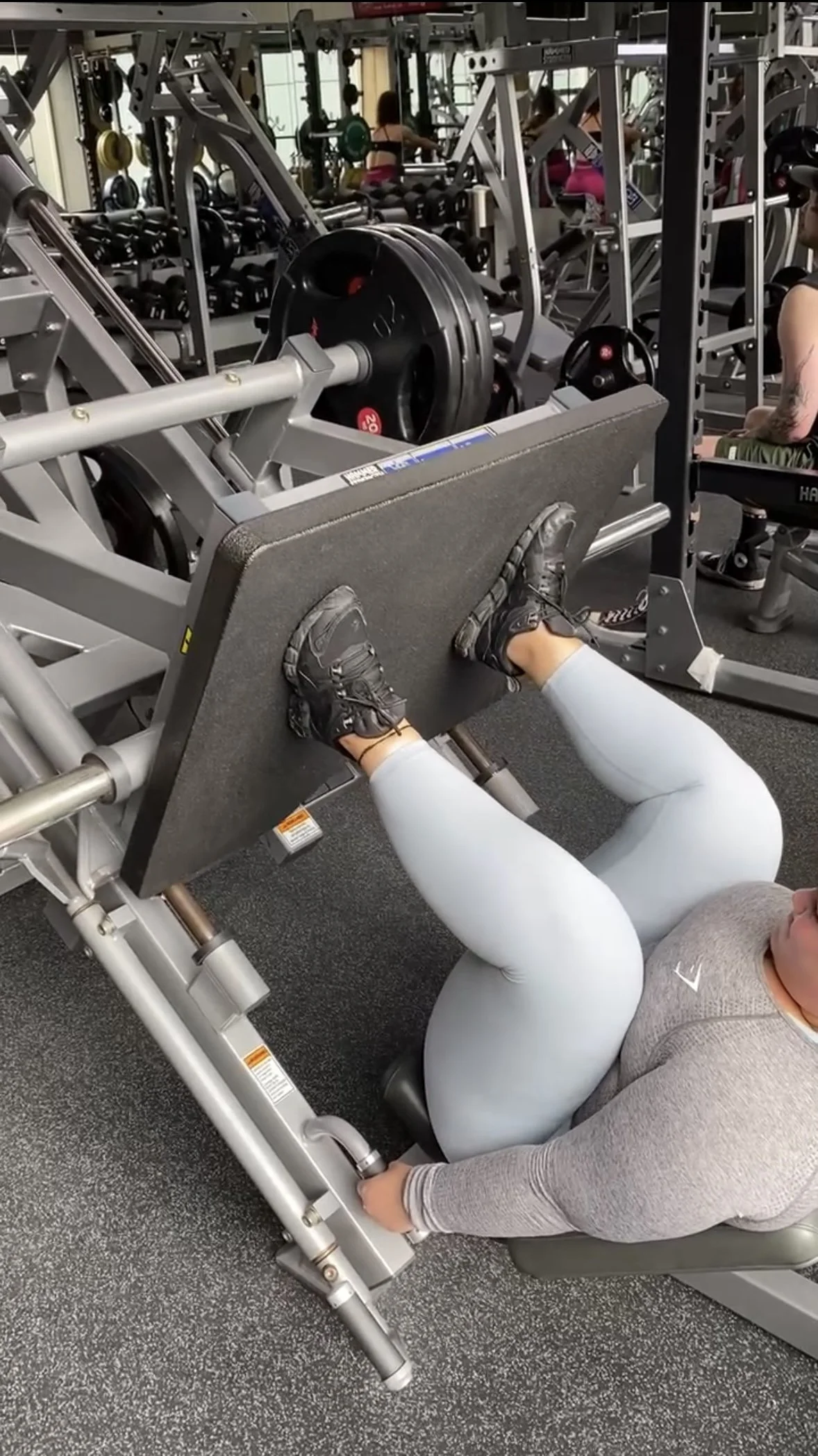Chloe’s Transformation
Over three years, my client and friend Chloe has made one of the most drastic physical and mental transformations I have seen. Going from being afraid to step foot in a gym to fitness being a part of who she is. She has became the embodiment of my belief that the gym can completely change your life for the better in more ways than just becoming healthier. In order to understand just how far Chloe has come, we need to start from the beginning.
FRUSTRATED AND LOST BUT READY FOR CHANGE
In 2022 Chloe was completely lost with her fitness journey, having lived most of her life feeling ashamed of how she looked and facing a barrage of degrading judgment, factors that had led her down the path of shame and an eating disorder diagnosis. But she didn’t want to continue living her life the way she was; she was ready for change.
However, everything she had tried before wasn’t sustainable. Starvation diets, HIIT circuits, and cardio would grant her results, but sustaining them beyond a couple of months felt impossible. She was unsure of what the solution was, and even what the next logical step forward was going to be.
Being a friend of hers and freshly certified, I reached out and offered my support and guidance as a personal trainer. And that is where our journey together started. After hearing about Chloe’s story with her eating disorder, exercise, and the false advice she had received via social media, I knew the approach I was going to take to push her in a better direction.
First Steps
Being shorter and possessing some genetic susceptibilities, I knew Chloe was at a disadvantage following the rudimentary advice of "eat less and do more cardio." You see, when someone is shorter but tries the standard weight loss approach of "eat less and do more cardio," it makes it extremely difficult (but not impossible) to achieve and maintain a calorie deficit especially if they have low amounts of muscle.
💡 Knowing this, I knew the solution to Chloe’s struggles was not to focus on weight loss initially but rather on muscle gain. The reasoning is: by increasing her lean body mass (LBM), it would subsequently increase her basal metabolic rate (BMR) the calories burned at rest, which at that stage was low due to her shorter height and lower muscle mass. With these increases, achieving and sustaining a calorie deficit would be more achievable and viable long term.
Our initial strategy was to focus strictly on getting into the gym consistently, three times per week, on a full-body training program, and implementing higher-protein and more satiating foods. With our targets set, we got to work. But even with the path laid out in front of us, it was still going to be a challenging one.
Initially, Chloe had a hard time training at the gym during populated hours, a common hurdle many individuals face when they first get started. It can be extremely daunting to step foot in a busy gym when you’re completely new, imposter syndrome creeps in. To get around that we would train at 9 p.m. after her aged care shift, allowing her to build comfortability in the gym.
The programmed sessions were typically four compound exercises, two for the upper body and two for the lower body. Each exercise had three working sets that we tracked, monitoring her performance and allowing us to gauge when to increase the weight on her movements.
Here’s an example of a session from her program:
💡 When it comes to following a weight training program, the key to making it truly effective is the intensity, something I drilled into Chloe very early on. Training close to or to failure in a set is critical for creating mechanical tension and stimulating muscle growth, without it you won’t see the results you want. Likewise with progressive overload, continual increases in your exercises need to coincide with your improvements otherwise the intensity will diminish and so will the effectiveness. There’s a lot more that goes into making a program as effective as possible but that’s the bottom line, you need to train hard.
And that’s what we did, Chloe trained close to or to failure for every working set. Training this way of course felt difficult at first, but it’s ultimately a skill that can be improved like any other, and Chloe grew increasingly comfortable with pushing herself.
After a couple of months, Chloe had really started to hit her groove with training and the habits surrounding it.
Logging her sessions every week and incorporating some daily walks, she began to establish discipline in her daily lifestyle. All of this meant she started to see some outstanding results.
These first few months were crucial in determining Chloe’s success into the future, establishing physical proof to herself that she is capable of turning the tides and changing her life. I knew the gym and weight training was the path to get her there and we were well on our way…
The Path Ahead
A year into her journey and Chloe’s continued to progress, there were up’s and downs but she never threw in the towel. It was at this stage I decided to change Chloe’s program to a Push / Rest / Pull / Rest rotation allowing greater training frequency and more rest between muscle groups. These changes were made to accommodate Chloe’s progress and implement the necessary changes required for her to continue maximising the effectiveness within her training.
💡 When an individual becomes increasingly experienced with weight training, their ability to recruit muscle fibres increases. Meaning they’re capable of utilising more of the available muscle tissue due to various adaptations within their nervous system. These adaptions mean a more experienced individual is capable of extrapolating greater effectiveness from each set however this also means they need more time to for the targeted muscles to recover from each session.
With Chloe’s nutrition we started to integrate some calorie tracking but never pushed it too far as to worsen her association with food and the process as a whole. Calorie tracking is meant to be a tool we can use to monitor our nutrition not a hinderance to our overall wellbeing.
The process continued…
Today
Two years later and Chloe has became the embodiment of mental and physical change. Not just cultivating a transformative and challenge oriented mindset but becoming truly comfortable in her own skin and finding a passion for fitness whilst building muscle and losing 18kg!
No longer fitting into pants that she bought 7 months ago!
Continuing to make sustainable progress and enjoying every moment of the process
She pushed through and broke down the barriers that were put up over years of shame and judgement!
I’m exceptionally proud of Chloe, she’s overcame a lot and truly became a more realised and brighter version of herself. It’s been extremely fulfilling to be her coach and I’m looking forward to seeing what we can achieve next!
“Lachie is consistent with fueling my goals and motivation into reaching them. He provides an incredibly motivating environment complete with set plans and goals that help me look forward to our sessions. Lachie has been my coach for 3 years and has helped me become so comfortable in a gym environment, not only helping me with my physical and health goals but also improving my mental health and healing my gym anxiety. Lachie is a 10/10 coach and I recommend him to the highest level possible. Taking the jump to train with Lachie changed my life in the best ways possible.”
Rest Longer, Perform Better
Resting for 3 could double your progress
Resting between sets is an integral part of our training, but they may be more influential than you initially assume. They’re more than just a brief respite from the intensity, they can completely change the effectiveness of your training. To highlight my point, allow me to explain why ensuring your resting at least 3 minutes between sets over just merely 1 minute could potentially fast track your progress.
Why Longer inter-set rests are superior
After we perform a set, there’s a whole host of fatigue mechanisms occurring throughout the central nervous system, cardiovascular system and the involved muscle groups themselves.
These fatigue mechanisms are a massive reason as to why there is a diminishing return with each additional set (that’s a post for another day).
In the presence of fatigue, motor unit recruitment diminishes (our ability to recruit muscle fibres), reducing the total stimulus the muscle group can receive and lowering our ability to generate force.
But there are things we can do to reduce the effects of fatigue within our programming and the session itself. One of the most impactful methods is to rest longer between sets, to allow some of the accumulated fatigue to drop. Now that’s not to say the longer you rest the better, as with anything there is a diminishing return and a point in which each additional minute of rest provides no additional benefit. But consistently studies have shown that resting for 3-5 minutes improves muscle size and strength outcomes.
HERE’s THE proof:
Let’s go over this study by Schoenfeld et al. (2016). It’s probably our most effective study on this subject to date, however not the only one displaying these results
Title: Longer Interset Rest Periods Enhance Muscle Strength and Hypertrophy in Resistance-Trained Men
Authors: Brad J. Schoenfeld, James Krieger, et al.
Published in: Journal of Strength and Conditioning Research
Link: PubMed Abstract
-
Participants: 21 resistance-trained men
Duration: 8 weeks
Training Protocol:
3 full-body workouts per week
3 sets of 8–12 reps per exercise (to failure)
Exercises: Squat, bench press, leg press, lat pulldown, shoulder press, etc.
Group A: 1-minute rest between sets
Group B: 3-minute rest between sets
-
Muscle Size:
After the 8 weeks, the 3-minute rest group had significantly greater increases in muscle size:
Biceps brachii:
+7.0% (3-min) vs +4.0% (1-min)
Triceps brachii:
+8.0% (3-min) vs +5.0% (1-min)
Anterior quadriceps (mid-thigh region):
+13.3% (3-min) vs +6.9% (1-min)
Strength:
The 3-minute rest group made greater gains in 1RM:
Back Squat:
+15.2% (3-min) vs +7.6% (1-min)
Bench Press:
+12.7% (3-min) vs +4.1% (1-min)
Across the board the 3-minute rest group experienced greater progress than the 1-minute rest group. Factoring in real world experience I can say undoubtedly that longer rests yield greater results.










